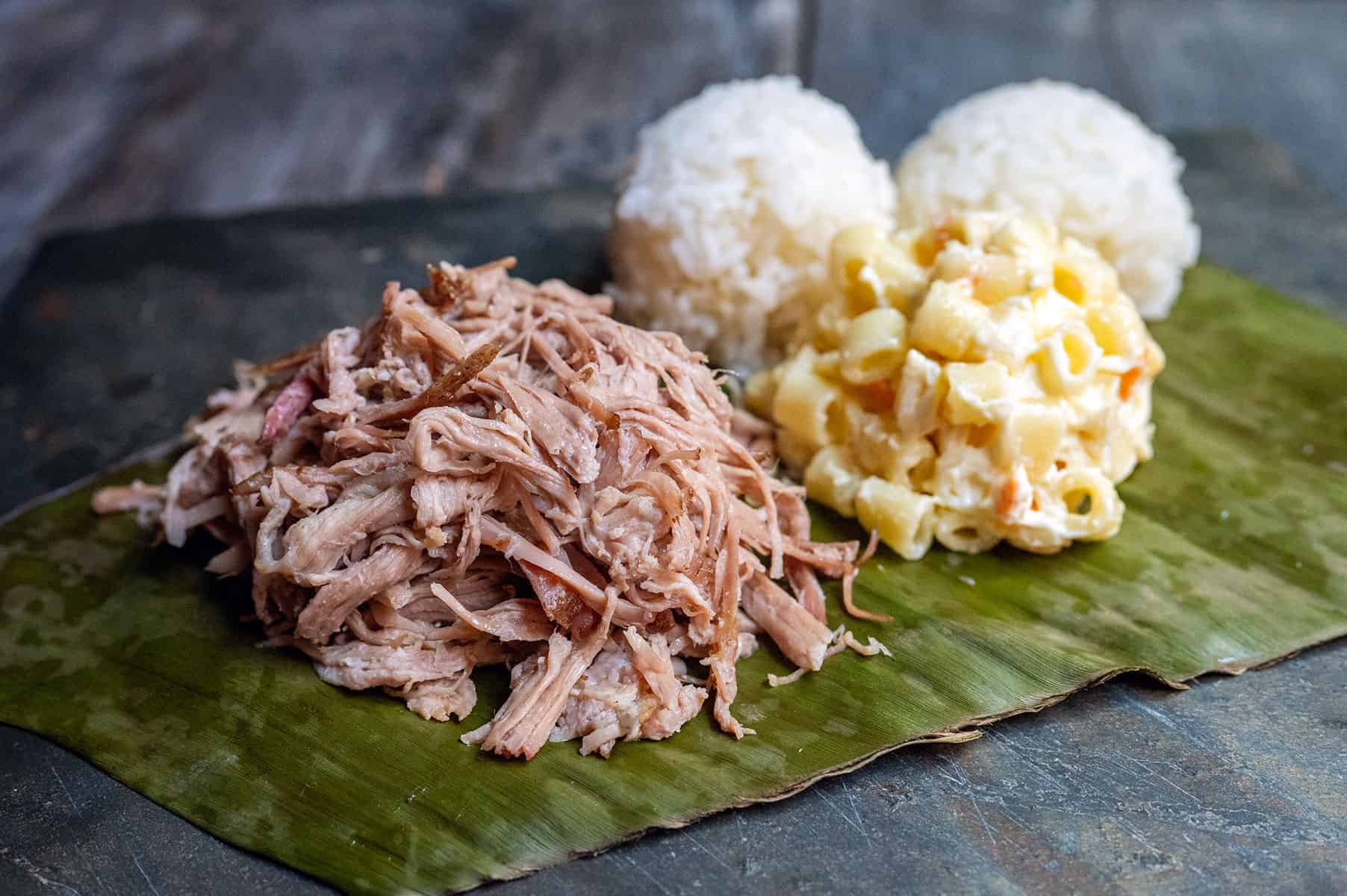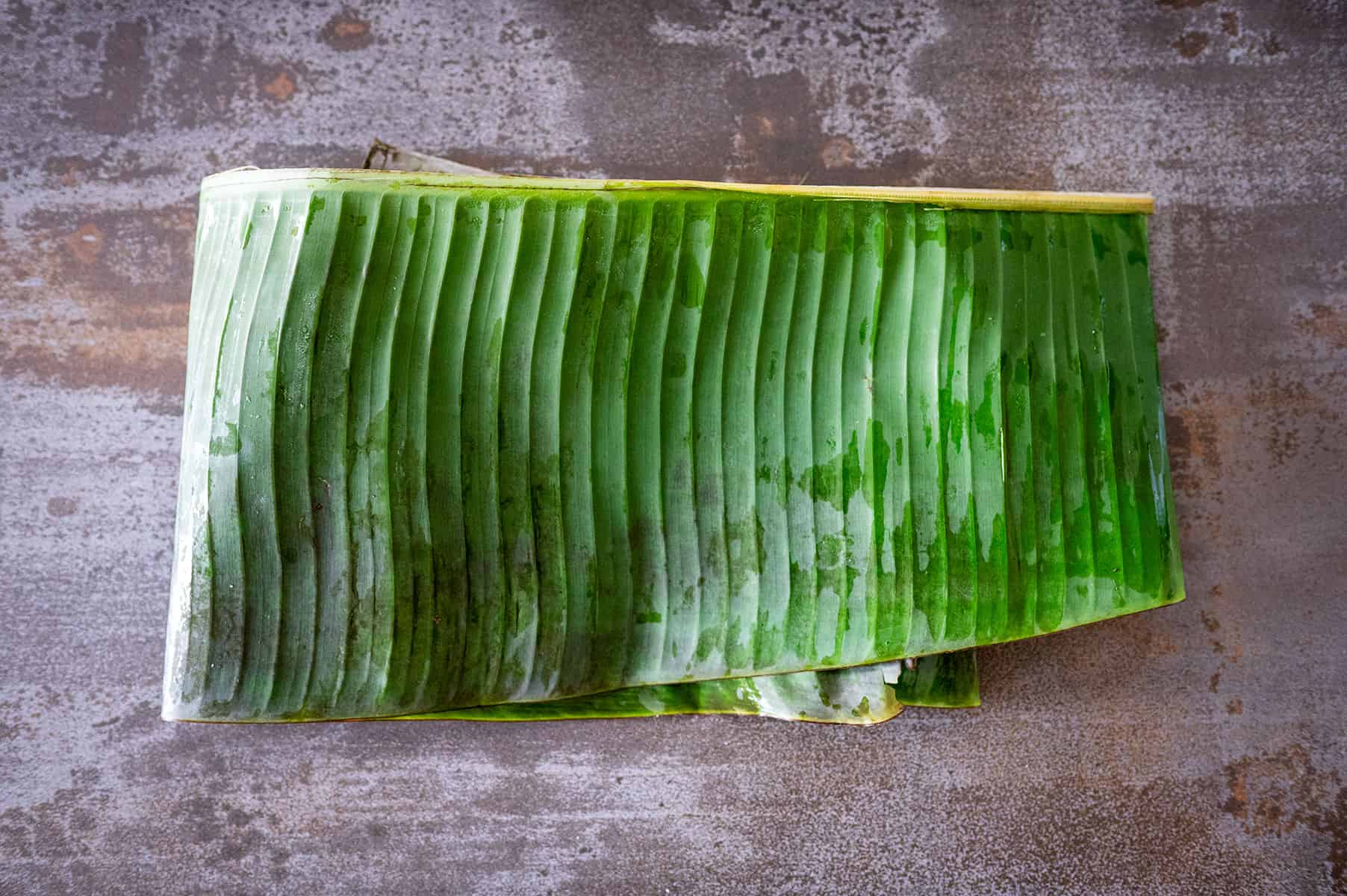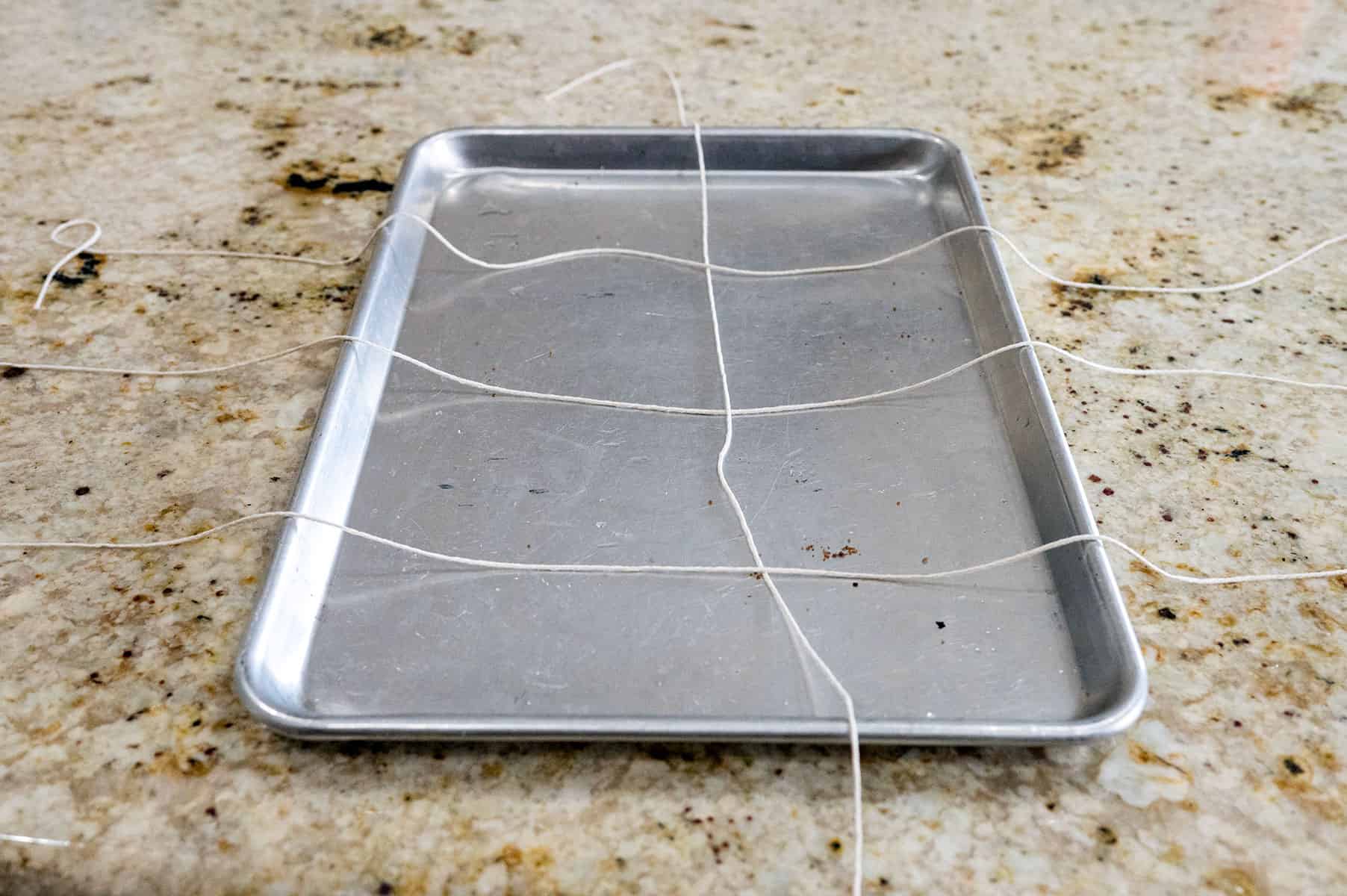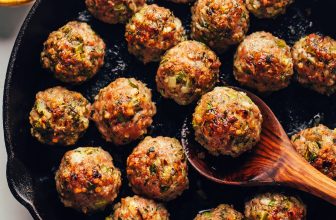
This smoked kalua pork recipe brings authentic Hawaiian flavor to your backyard. Cooked low and slow with banana leaves, sea salt and smoke.

Smoked Kalua pork is the ultimate Hawaiian-inspired feast you can make at home. With just pork, salt, smoke and banana leaves, you’ll get unbelievably juicy, tender pulled pork with a touch of island flavor.

What is Kalua Pork?
If you walk into any Hawaiian restaurant to order a plate lunch, the menu is always going to include Kalua pork.
The shredded pork is smoky and seasoned with Hawaiian sea salt. It’s usually served alongside a couple scoops of white rice and Hawaiian mac salad.
In Hawaiian, the word kalua translates to cook in an underground oven, known as an imu. Hawaiians will season a hog with salt, wrap it in banana leaves and bury it in the pits with coals and hot rocks, until it’s tender.
I had my first experience enjoying authentic kalua pig at Hawaiian luaus in the ’80s and again in the ’90s. The entire spread of food was so delicious (except for the poi).
What I remember most was the experience and feeling of community, celebration and joy.
Digging a hole and burying a whole pig in your backyard isn’t the most practical cooking method. In fact, most Hawaiian restaurants on the mainland don’t cook the pigs underground either.
Instead, chefs and home cooks use pork butt or pork shoulder and add salt and smoky flavor to create beautifully shredded pulled pork.
How this kalua pork recipe is different
A lot of the kalua pork recipes that you’ll find online use liquid smoke to try to mimic the smoke flavor you would get if you cooked the pork in an imu.
And many recipes are prepared on the stovetop or in a crock pot, slow cooker or instant pot.
With my recipe, you’re going to get authentic smoke flavor two ways, by actually smoking it, and by using smoked sea salt.
And in true Hawaiian style, the pork is wrapped in banana leaves, which adds an earthy flavor and accentuates the natural sweetness of the pork.
-
Heat Grill: Preheat your smoker to 250F degrees with an indirect heat zone. See below for wood flavor suggestions.
-
Prep: Lay 4 pieces of twine on a sheet pan. Add clean banana leaves on top.
-
Season: Place the pork butt, fat side down on the banana leaves. Season all over with 2 tablespoons of smoked sea salt.
-
Wrap: Fold the banana leaves around the pork and secure with the butcher’s twine. Place the wrapped pork in a disposable aluminum pan.
-
Smoke: Place on the smoker and cook to an internal temperature of around 160F degrees. This will take about 6 hours.
-
Cover: Pour hot water into the pan so that it’s 1/2-inch deep. Cover the pan tightly with aluminum foil.
-
Cook: Continue cooking to an internal temperature of 200F degrees. This will take another 2 hours.
-
Rest: Remove the pan of pork from the smoker and let it rest for about 30 minutes.
-
Shred: Cut the twine and unwrap the banana leaves. Transfer the pork to another pan. Shred, removing any excess fat.
-
Season: Taste the pork. It will likely need 2-3 more teaspoons of sea salt. Also check the moisture. If you’d like it to be more moist, add a couple spoonfuls of the liquid from the pan.
Calories: 205kcalProtein: 27gFat: 10gSaturated Fat: 3gPolyunsaturated Fat: 1gMonounsaturated Fat: 4gCholesterol: 93mgSodium: 1413mgPotassium: 472mgVitamin A: 8IUVitamin C: 1mgCalcium: 20mgIron: 2mg
Nutrition information is automatically calculated, so should only be used as an approximation.
What you’ll need

- Pork Shoulder: Look for a pork shoulder, also called a pork butt or Boston butt. This is the perfect cut for this recipe, if you don’t plan to cook a whole hog.
- Banana Leaves: You should be able to find these at an Asian market or Latin grocery store.
- Smoked Sea Salt: I use Real Salt brand smoked sea salt. It’s been smoked for hours using mild hard woods.
- Butcher’s Twine: This is what you’ll use to tie the leaves around the pork.

PRO TIP: I recommend using smoked sea salt instead of liquid smoke. It has a more natural flavor.
See the full recipe card above for servings and a full list of ingredients.
How to smoke kalua pork
Preheat your grill to 250F degrees with an indirect heat zone. I use hickory wood pellets. If cooking on a charcoal grill, add two wood chunks. If you plan to cook this on a gas grill, add hickory wood chips to a foil pouch.
PRO TIP: If you can get your hands on kiawe, which is Hawaiian mesquite, it will taste even more authentic. If you don’t have kiawe or hickory, try fruit woods like apple or cherry for a slightly sweeter finish.
Step 1: Prep the banana leaves
Place some butcher’s twine on a large sheet pan.
Unwrap the banana leaves and wipe them with a damp paper towel to remove any dirt residue. Layer 2-3 banana leaves on top of the twine.


Step 2: Season the kalua pork
Place the pork butt on top of the banana leaves. Season liberally with the smoked sea salt. I usually use about 2 tablespoons of salt per pork butt.

Step 3: Wrap the pork
Fold the sides of the banana leaves up over the pork and wrap it like a present. Use the twine to secure it. Then, place the wrapped pork roast in a disposable aluminum pan or a roasting pan.

Step 4: Smoke
Place the pan onto your preheated smoker and cook for about 6 hours to an internal temperature of 160F degrees. Throughout this process, the pork will absorb the flavor of the banana leaves and the smoke.

I use a Thermoworks RFX wireless meat thermometer to monitor the internal temperature of the pork. Insert the probe into the center of the meat, being careful not to hit the bone.

Step 5: Wrap to add moisture
After 6 hours, look at the pan and see how much liquid is in the bottom. If you have a half inch of natural liquid, go ahead and cover the pan with foil. If you don’t have that much liquid in the pan, pour in some hot water. Then cover with foil.
Continue cooking until the pork reaches an internal temperature of 200F degrees.

Step 7: Unwrap and shred
Once the pork has reached 200F degrees. Remove it from the smoker. Let it rest for about 30 minutes. Then, use a pair of scissors to snip the twine and unwrap the pork.


Transfer the pork to a clean pan. Shred the pork, removing any large pieces of fat. You can use two forks, or do like they do in Hawaii and remove the bone and mash the meat with the bone.
Personally, I wear heat-resistant pitmaster gloves. That way I can feel the fattier pieces and discard them.
Taste the pork. It will likely need a sprinkle of 2-3 teaspoons of smoked sea salt mixed in.
If it needs more moisture, spoon some of the liquid from the other pan into the shredded pork.

How to serve smoked kalua pork
Once you have shredded kalua pork, you can serve it traditionally has a plate lunch with rice and mac salad.

To make pork sandwiches, serve it on King’s Hawaiian Sweet Rolls with a touch of BBQ sauce. If using sauce, I recommend choosing one that has an Asian flavor profile.

Because leftover kalua pork is just seasoned with salt and smoke, it’s super versatile. You can use it in nachos, tacos, hand pies or piled on smoked mac and cheese.
Storage
Store leftovers in an airtight container in the fridge for up to five days. You can also store leftovers in the freezer. I like to portion kalua pork into smaller vacuum seal bags. Then, I freeze it for future meals.
GCG Pro Pitmaster Tips
- Use pork shoulder
- Instead of liquid smoke, season with smoked sea salt
- For authentic flavor, wrap in banana leaves and smoke on a grill
- Add moisture after about 6 hours
- For the perfect shred, cook to 200F degrees
Frequently Asked Questions
Kalua pork is technically pulled pork. But when people reference pulled pork, they’re usually talking about pork that is seasoned with Kansas City style or Carolina-style BBQ flavors. Kalua pork is seasoned simply with sea salt.
Kalua pork is traditionally made using a whole hog. For an easier at-home recipe, use pork shoulder.
Kalua pork highlights the natural sweetness of pork. It’s simply meat with sea salt and smoke. If you wrap it in banana leaves, it will also have a bit of an earthy flavor.
No. Not at all. They’re more earthy with just a hint of sweetness.
When smoking the pork at 250F degrees, it will take about 45-60 minutes per pound.
Newest Recipes







